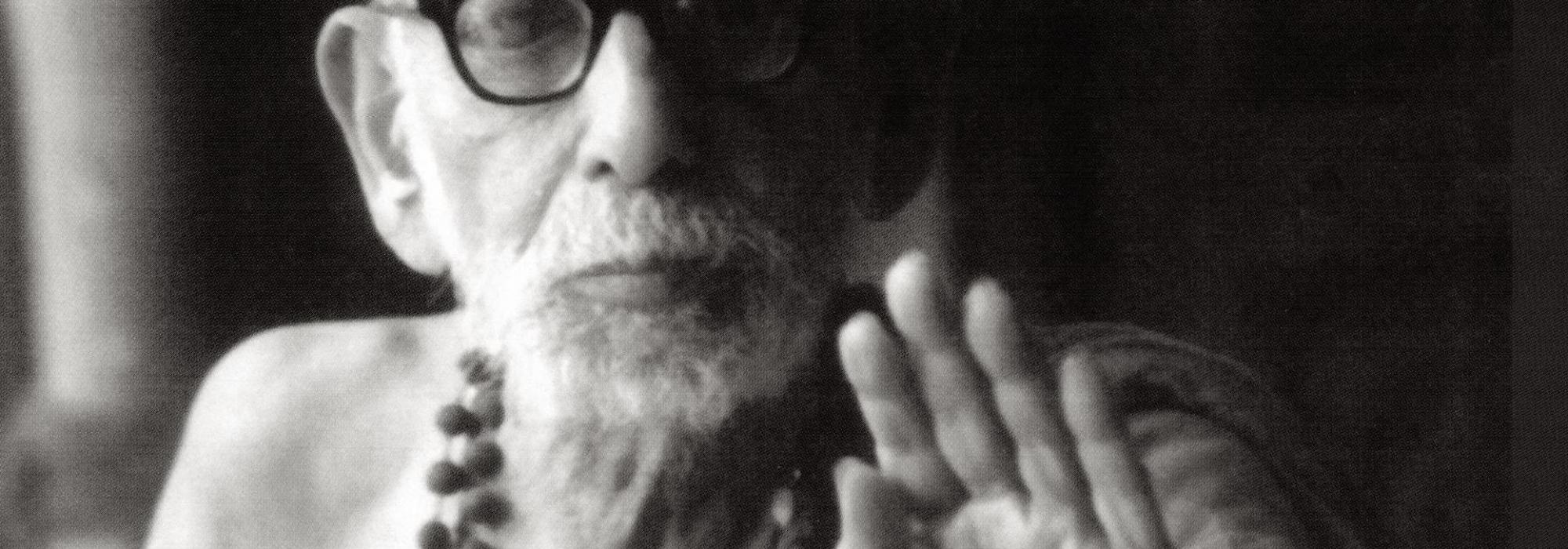DVG’s Sri Ramaparikshanam has attempted to examine and analyse the various strands of difficult questions related to Dharma by creating imaginary conversations that Sri Rama has between Ahalya, Sita, Lakshmana and other important characters. Although Sri Rama is a Puranic person, he is placed in the human world and his various accomplishments and sorrows are brought out in this work.
The gentleness in honouring all life |
The method of enjoying the riches of the earth without the taint of greed||
The attitude of always turning towards the Supreme|
The feature of Rama’s Kingdom is one of Dharma||
Twenty-five years after he wrote Sri Ramaparikshanam, DVG brought out the Sri Krishnaparikshanam work in 1970. This work analyses the life of Sri Krishna in the form of a musical drama. Along with it, the work also contains a detailed essay that philosophically explores such difficult episodes as Sri Krishna’s dalliances with the Gopikas. From one perspective, it was far more challenging to write about Sri Krishna’s life.
This work gave a special sense of elation to DVG when it was completed. He said the following when the work was published: “I have put in lots of efforts over several years in political writing. However, I didn’t get the kind of satisfaction from all that work which I derived from writing this book.”
The series of books that DVG published on Maharshi Vidyaranya as early as in the decades of 1920-30 counts as first rate scholarship. For example, the renowned historical scholar, Prof. G.S. Dikshit says the following about the remnants of an inscription that is found in the Vararaja Temple at Kanchipuram: “Those who read this inscription before DVG have not properly understood the meaning of its lost portion. It is only DVG who read it in a fashion that brings out its accurate meaning”… “Vidyaranya was a Kannadiga. That is the reason he made Karnataka as the land of his work. This is the first of the findings unearthed by DVG.” In the perspective of some people, the Vijayanagara Empire was founded under the leadership of Sri Vidyatirtha. However, DVG marshalled a vast amount of internal evidences and on this basis, correctly established the fact that Sri Vidyatirtha was largely inward looking and that Vidyaranya who was keenly interested in worldly matters took the initiative and became responsible for establishing the Vijayanagara Empire. DVG memorably and vividly sketched the series of the pervasive cultural rejuvenation work that was accomplished by the efforts of Sayana – Madhava.
DVG also wrote about the lives and contributions of numerous contemporaries of Vidyaranya. He also had made plans to write about several other such contemporaries: Angirasa Madhava, Kriyashaktyacharya, et al. However, his attention was focused in other directions after the 1930 decade. And so, the aforementioned research work took a backseat.
The Kanchi Paramacharya repeatedly insisted that DVG should bring out a comprehensive volume on Maharshi Vidyaranya. However, that did not materialize.
But DVG completed another order that the Paramacharya had given him. When DVG had crossed 80 years, the Paramacharya told him to bring out a work propounding the essence of Vedanta based on experience. Accordingly, DVG made a Sankalpa within himself and delivered a long discourse on it and got it written down a few days before he passed away.
On the occasion of remembering the Paramacharya’s Shatabhishekha, an endowment was established in his name. The first discourse that was delivered under the aegis of this endowment was the aforementioned work of DVG. This discourse was read in the presence of Prof P. Shankaranarayanan, Ranganath Diwakar and others at the Bharatiya Vidya Bhavan, Madras, some time after DVG’s death (7 October 1975).
***
DVG’s body of work comprise poems, songs, philosophical commentaries, and thoughts on politics and other matters. At the time he began his literary endeavours, there was paucity in Kannada in various literary genres. For this reason, DVG had to devote his intellectual faculties to create works in different genres like other luminaries of this era of renaissance. Thus, DVG wrote drama and a few stories for children. A good portion of his work is inspired by the contemporary social conditions.
The Bhagavad-Gita is not a work that preaches only Sanyasa; it is a work that inspires respect for worldly life and infuses enthusiasm in discharging one’s duty—this is what DVG propagated in his discourses on the Gita (Srimad Bhagavad-Gita Tatparya – Jivanadharmayoga: 1966). An earlier essay has narrated the backdrop to this study of the Gita.
The debates regarding differences in various sects are largely semantic and that it is both feasible and essential to have harmony among sects—this was the stand of DVG.
To be continued














































